#south indian cinema news
Explore tagged Tumblr posts
Text
Sandeep Reddy Vanga Begins Work On Prabhas' Next Supposed Blockbuster "Spirit"
Notes of 'Spirit' resonate as Prabhas' next begins its musical chapter!
Read the full article here: https://www.theomenmedia.com/post/prabhas-spirit-sings-its-first-notes-music-sessions-kick-off-with-a-bang

#Spirit Begins#Prabhas#Sandeep Reddy Vanga#Prabhas Spirit#Spirit Movie#Harshavardhan Rameshwar#Indian Cinema#Movie Music#Film Announcement#Cinema News#Rebel Star#Tollywood#Bollywood#South Indian Cinema#Movie Updates#New Film#Music Of Spirit
3 notes
·
View notes
Text
#Bangaram#Bollywood Hungama#Health#Health Update#Krishna DK#Raj Nidimoru#Samantha Ruth Prabhu#South#South actress#South Cinema#South cinema news#South Indian Actress#Tollywood Celebrity#Tollywood Celebrity News#Tollywood News#bollywood#features#bollywood news#social media#trending news#latest news#trending bollywood news#trending#news
0 notes
Text
Rakul Preet Singh Highlights Growing Acceptance Of South Cinema: 'I Think They Always Had Acceptance' | People News
New Delhi: In a recent award show, actress Rakul Preet Singh praised the enduring popularity and acceptance of South Indian cinema, particularly in light of its expanding reach across India. Known for her captivating performances in both english and South Indian films, Rakul has established herself as a prominent figure in the entertainment industry. Speaking, she reflected on the evolution of…
#ajay devgn#De De Pyaar De 2#entertainment news#Rakul Preet Singh#Rakul Preet Singh award#South Indian cinema
0 notes
Text
Martin upcoming movies 2024: Martin movie will be seen in 2024 with dangerous action, what will be the budget

Martin Movie trailer out: Martin movie trailer has been released. Dhruv Sarja will be seen in the lead role. In this movie, he is a soldier of the Indian Army. It is shown in the movie how he dominates the Pakistani Army. This movie is a patriotic movie and will be released on the big screen. You will get to see stunt scenes and suspense in the movie.
This movie will be released in 11 languages which are Kannada, Tamil, Malayalam, Telugu, Hindi, Bengali, Arabic, Japanese, Chinese, Korean, Spanish. This will be the South Indian movie to be released in the maximum number of languages.
0 notes
Link
The RRR movie has been in constant discussion since its release and after winning the Oscar, it again made headlines. Meanwhile, a sad news is coming, Irish, who played the role of Villain in SS Rajamouli's blockbuster film 'RRR'. Actor Ray Stevenson has passed away at the age of 58. However, the reason behind the death of the actor is yet to be known.
#south indian cinema#southindianactress#south indian films#latest news in hindi#bollywood news#bhojpuri group#southbeach#RayStevensondied
0 notes
Text
Sarath Babu, a 71-year-old South actor, has passed away.
Sarath Babu was admitted to a hospital in Hyderabad earlier this month and his condition was expected to be critical.

Sarath Babu, popularly known for working with some of the biggest superstars in the South industry including Nagarjuna, Kamal Haasan and Rajinikanth, passed away on May 22 at the age of 71. The actor, known for working in Tamil and Telugu industry, was admitted to the hospital in Hyderabad for a treatment for his multi-organ damage earlier this month. While the actor was in a recouping stage, he passed away on Monday.
Click here to read more.
#bollywood#dailybollywoodqueens#news#bollywood latest news#bollywood hungama#south indian films#south indian cinema#south movies#sarath babu
0 notes
Text






sharmila tagore in the 60s ♡⁺‧₊˚
an iconic south asian actress, know for her grace, beauty and talent! sharmila tagore played a pivotal role in shaping indian cinema from the 1960s to the 1980s.
with her striking on-screen presence and expressive brown eyes, she brought depth and emotion to a wide range of beloved characters! she could effortlessly portray the quintessential romantic heroin, the complex modern woman, or the intense + dramatic female lead.
her fashion sense easily blended traditional indian wear with contemporary styles, making her a fashion icon to many! with this, she was able to break new ground and re-define the portrayal of women on-screen in a more progressive light.
she will forever be a spirit of strength and independence which left an undeniable mark within south asian culture! 🪷
#sharmila tagore#60s#60s fashion#60s icons#south asian#desi#fashion#brown girl#retro aesthetic#old bollywood#bollywood#cinema#india
47 notes
·
View notes
Text
The Digital Transformation of DesiCinema

Not long ago, catching the latest Desi film meant heading to a packed theater, dodging spoilers, and waiting months for the DVD. Today, you can stream it on your phone with subtitles in ten languages. The digital revolution has not just changed how desi cinemas is consumed—it’s reshaped how it’s made, distributed, and celebrated.
Streaming: A Game Changer
With platforms like Netflix, Amazon Prime Video, ZEE5, and Hotstar making aggressive moves in South Asia, Indian cinema has entered a new era. Now, independent filmmakers from Kerala or Assam can release their films to global audiences without relying on major distributors. Films that may never have found theatrical space are getting international viewership and critical acclaim.
OTT (over-the-top) platforms have also blurred the lines between cinema and television. Long-form storytelling in web series like Sacred Games, Made in Heaven, and The Family Man has pushed writers and actors to dive deeper into characters, offering viewers something more layered than a 2-hour feature.
Diversity on the Rise
One of the most exciting effects of this digital wave is the rise in regional content. Malayalam thrillers, Marathi social dramas, and Tamil sci-fi films are now just a click away for someone sitting in Toronto or Berlin. Language is no longer a barrier, thanks to subtitles and dubbing. As a result, regional cinema is finally getting the global respect it has long deserved.
Take the Malayalam film Jallikattu, or Tamil’s Super Deluxe—both non-traditional, bold, and widely discussed outside of India. These aren’t just good Indian films; they’re great films, period.
Content Over Star Power
Gone are the days when big-budget movies with superstar leads automatically meant success. In the digital age, audiences are leaning into story-driven content. Films like Article 15, Paatal Lok, and Sir proved that compelling scripts and fresh faces can create just as much buzz—if not more—than A-lister blockbusters.
This shift is also encouraging producers to take more creative risks. Themes once considered taboo—mental health, sexuality, caste discrimination, and political critique—are now being explored openly, often with raw, realistic portrayals.
Social Media & Fandom Culture
DesiCinema fandom has gone digital too. Trailers drop on YouTube, fan theories explode on Twitter, and memes turn movie scenes into viral moments. Platforms like Instagram and Reddit have become hubs of discussion, critique, and celebration. Even actors and directors are more accessible, often interacting with fans directly.
It’s no longer just about watching a film—it’s about participating in the culture around it.
The Road Ahead
With AI, virtual production, and increasingly affordable filmmaking tools, desi ciinema is set to break even more barriers. Independent creators can now shoot on smartphones, edit at home, and reach audiences through YouTube or Vimeo. Meanwhile, the big players are exploring international collaborations, as seen with RRR and its global success.
DesiCinema isn’t just adapting to the digital age—it’s thriving in it.
2 notes
·
View notes
Note
Hiii, I've been following your blog since some time. And I've been very fascinated and impressed by your journey. I'm sure at this point you know hindi better than me (I'm not proud of this, I'll focus better on Hindi from now). And I've always had this question, I'm not sure if I asked you or if you have already answered it or not. But how did you start learning Hindi? Are you Indian or indian origin? And how has your journey been? Did you find difficulties? What was easy for you and what did you like/dislike about the culture as you continued learning the language? I'm very curious.
Hi and thank you so much for such a nice ask!
Here's my previous answer to how I got into Hindi in the first place.
In short, I am just a Finnish linguaphile with no connection to India or South Asia whatsoever. I have loved learning about different languages since childhood but Hindi (and Urdu on the side) has been my passion for the past six to seven years now.
I got into the language very typically through Hindi cinema but more than just the aesthetics I'm fascinated by the history, art, socio-political fabric, nature and just all of it. I love learning new things in general and there's always something new about Indian people or culture that draws my interest. Looking at things - whether political, religious or whatever - from a distance, I try to observe and form an understanding more than form opinions - it's not my place and all I have is endless respect for Indian people. I've never been to India but believe me I have long to-do and to-see lists when I eventually one day get to go there.
My language journey has been very enjoyable. I've done some online courses, had iTalki tutors, done some videos to practice pronunciation, made a huge Anki deck and done lots of reading, podcast listening and film watching. I was making great progress but my learning has been on somewhat hiatus since last autumn when I got a new job that took all my energy. Since January I've been writing a PhD thesis proposal that has taken all my spare time and my Hindi learning has diminished to scrolling Tumblr poems and listening to film songs while commuting. The passion is still there and I intend to return to my routines as soon as possible.
What I love most about Hindi as a language is the logic of it. It's - for me at least - very easy to 'get' Hindi, as in understanding the grammar rules - why things are the way they are. Hindi is a very learner-friendly language that way. A bigger issue is the immense vocabulary and understanding of the historical and cultural roots around borrowing sounds and words from Sanskrit, Persian and other languages - how they play together and how they do not etc. When learning Hindi you are never just learning Hindi!
I had some trouble learning Devanagari at first and learning to differentiate all the sounds (and produce them from my mouth). It took time, but one day they clicked. I'm not perfect and there's a lot of room for improvement but seeing the progress I've made is very encouraging and helps me keep on learning. Learning Nastaliq and Naskh is another story - and another journey altogether!
7 notes
·
View notes
Video
youtube
Pushpa 2: How South Stars Are Becoming The NEW FACE of Indian Cinema - 6th Dec 2024
In this episode, we will explore why Bollywood, once the king of Indian cinema, is losing its grip on audiences, especially in North India, and how South Indian films are taking over. We highlighted how South Indian stars like Allu Arjun and RRR’s Ram Charan are cementing their fanbase in the North, with Allu Arjun's visit to Patna and Ram Charan’s arrival in Lucknow reflecting the growing pan-India appeal of South Indian cinema. As Bollywood struggles to evolve, South cinema continues to bridge the cultural divide, creating a new wave of mass entertainment that resonates with Indian audiences everywhere.
This episode breaks down how and why this seismic shift is happening.
2 notes
·
View notes
Text
Ajith Kumar's "Good Bad Ugly's" Recent Regional Theatrical Distribution Rights Deal Raises Some Questions
Breaking News! Ajith Kumar's "Good Bad Ugly" might be shifting from Pongal to Summer 2025! Speculation rife as Romeo Pictures secures theatrical rights, but no Pongal mention. Is "Vidaamuyarchi" taking the slot?
Read the full article here: https://www.theomenmedia.com/post/ajith-kumar-s-good-bad-ugly-shifts-gears-from-pongal-to-summer-2025

#Movie News#Ajith Kumar#Good Bad Ugly#Tamil Cinema#Movie Update#Film Industry#Summer Release#Action Comedy#Ajith Fans#GBU#Cinema News#South Indian Cinema#Bollywood#Kollywood#Tollywood#Sandalwood#Malayalam Cinema
2 notes
·
View notes
Text
#Bheema Sena Nala Maharaja#Bollywood Hungama#Hi Nanna#Kannada cinema#Nani#Plagiarism#Producer#Pushkara Mallikarjunaiah#Social Media#South#South Cinema#South cinema news#South Indian Movies#Telugu Cinema#Telugu movies#Tollywood News#Unofficial Remake#bollywood#features#trending bollywood news#latest news#trending news#news#bollywood news#trending
0 notes
Text
NTR Jr’s Devara Part 1 Becomes 2024’s Second Most Watched South Indian Film On Netflix! | Regional News
New Delhi: NTR Jr.’s Devara Part 1 has Continuing its record-breaking journey, the magnum opus has ascended to become the second most-watched South Indian film of the year on Netflix. Adding to its monumental success at the cinema halls, the film has maintained its position in the platform’s trending list for an impressive five consecutive weeks, a testament to its enduring appeal and universal…
#Devara: Part 1#janhvi kapoor#Netflix#Netflix Most Watched South Indian Film#Netflix Top Movies#NTR Jr movies#NTR Jr.#Saif Ali khan#south movies
2 notes
·
View notes
Text
Bollywood Vs The South Indian Cinema
Introduction to Bollywood and South Indian Film Industries
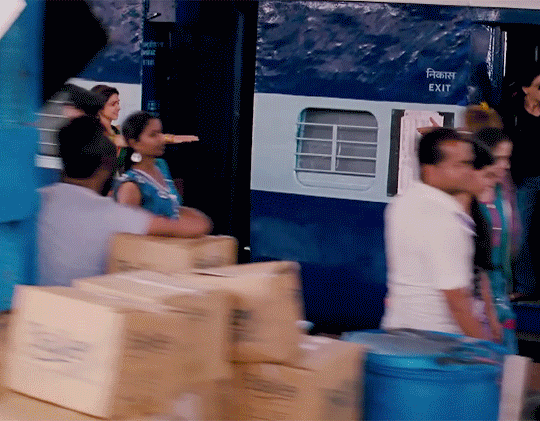
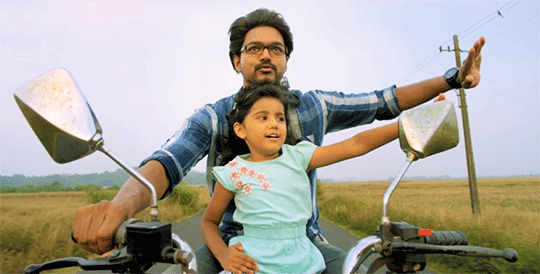
India is renowned for its vibrant and diverse film industries, with Bollywood representing the Hindi-language cinema based in Mumbai and the South Indian movie industry encompassing Tamil, Telugu, Malayalam, and Kannada films. Each of these industries has its own unique characteristics, cultural influences, and star power that have captivated audiences worldwide. In this article, we explore the dynamic landscape of Bollywood and South Indian cinema, delving into their historical evolution, box office impact, global recognition, stylistic elements, talent pool, evolving trends, and the challenges and opportunities they face in the ever-changing world of cinema.
Overview of Bollywood and South Indian Movie Industries
Introduction to Bollywood and South Indian Film Industries
Bollywood, the Hindi-language film industry based in Mumbai, and the South Indian movie industry, comprising Tamil, Telugu, Kannada, and Malayalam cinema, are two powerhouses of Indian cinema known for their unique styles and storytelling.
Historical Development and Growth
Bollywood traces its roots back to the early 20th century, while South Indian cinema has a rich history dating back to the 1930s. Both industries have evolved over the years, embracing new technologies and trends to captivate audiences worldwide.
Cultural Influences and Diversity in Bollywood and South Indian Films
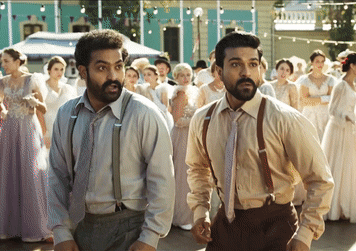
Themes and Storytelling in Bollywood Films
Bollywood films often explore themes of love, drama, and family relationships, blending extravagant song-and-dance sequences with emotional storytelling that resonates with audiences of all ages.
Regional Diversity in South Indian Cinema
South Indian cinema, on the other hand, boasts a diverse range of genres and storytelling techniques across its different language industries, showcasing rich cultural traditions and narratives unique to each region.
Box Office Success and Market Reach of Bollywood vs South Indian Cinema
Box Office Performance of Bollywood Films

Bollywood films have a global appeal and consistently dominate the Indian box office, with big-budget productions and star-studded casts drawing massive audiences both domestically and internationally.
Market Dominance of South Indian Cinema in Regional Markets
While Bollywood enjoys a wide reach, South Indian cinema holds sway in its respective regional markets, with loyal fan bases and a steady stream of hit films that cater to the diverse cultural preferences of audiences in the South.
Impact of Bollywood and South Indian Films on Global Cinema
International Recognition and Film Festivals

Both Bollywood and South Indian films have garnered international acclaim, with entries in major film festivals and recognition for their unique storytelling, performances, and technical brilliance that transcend cultural boundaries.
Global Box Office Influence
The global popularity of Bollywood and the rising profile of South Indian cinema have expanded the reach of Indian films on the world stage, influencing trends in filmmaking and attracting a diverse audience eager to experience the magic of Indian cinema.# Unique Characteristics and Stylistic Elements in Bollywood and South Indian Movies
## Musical Elements in Bollywood Films Bollywood movies are known for their infectious songs and dance sequences that range from emotional ballads to energetic dance numbers. These musical interludes often become chart-topping hits and play a significant role in the storytelling of the film.
## Action and Visual Effects in South Indian Cinema South Indian cinema, particularly in the Tamil and Telugu industries, excels in high-octane action sequences and cutting-edge visual effects. From gravity-defying stunts to larger-than-life fight scenes, South Indian movies set the bar high when it comes to adrenaline-pumping action on screen.
Talent and Star Power: A Comparison between Bollywood and South Indian Film Industry
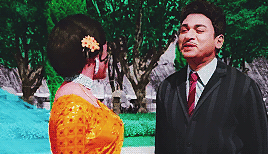
## Superstars of Bollywood vs South Indian Cinema Bollywood boasts of iconic stars like Shah Rukh Khan, Salman Khan, and Aamir Khan who have a massive global fan following. On the other hand, South Indian cinema has its own galaxy of superstars including Rajinikanth, Vijay, and Prabhas, who command immense popularity and loyalty from their fans.
## Emerging Talent and New Faces in the Industry Both industries are witnessing the rise of talented newcomers who are making a mark with their fresh acting skills and unique personas. Whether it's Bollywood's Sara Ali Khan or South Indian sensation Rashmika Mandanna, the influx of new talent ensures a dynamic and evolving film landscape.
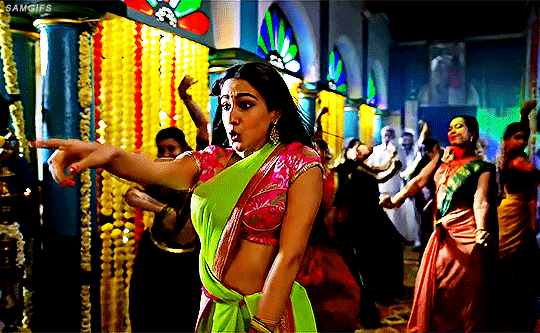
# Evolution and Trends in Bollywood and South Indian Cinema

## Technological Advancements and Digital Impact With advancements in technology, both Bollywood and South Indian cinema are embracing CGI, VFX, and digital filmmaking techniques to enhance the visual appeal of their movies. This digital revolution has revolutionized the way films are made and consumed, opening up new possibilities for storytelling.
## Changing Audience Preferences and Genre Shifts Audiences' tastes are constantly evolving, leading to a shift in the kinds of films being made in both industries. While Bollywood is exploring diverse genres beyond traditional romances and dramas, South Indian cinema is experimenting with unconventional narratives and pushing the boundaries of storytelling.
# Challenges and Opportunities for Growth in Bollywood and South Indian Movie Industries
## Piracy and Copyright Issues One of the major challenges faced by both industries is piracy and copyright infringement, which affects the revenue of filmmakers and producers. Finding effective ways to combat piracy and protect intellectual property rights is crucial for the sustainable growth of the Bollywood and South Indian movie industries.
## Collaborations and Co-Productions for Global Reach To expand their reach and appeal to a global audience, collaborations and co-productions between Bollywood and South Indian filmmakers are becoming increasingly common. By joining forces and sharing expertise, the industry can leverage international markets and create content that resonates with a diverse audience worldwide.As we conclude our exploration of the Bollywood and South Indian movie industries, it is evident that both have made significant contributions to the world of cinema, showcasing diverse storytelling, cultural richness, and immense talent. While Bollywood's global reach and iconic status continue to shine, the South Indian film industry's regional dominance and unique offerings are equally noteworthy. With ongoing evolution, emerging trends, and the constant pursuit of excellence, these industries stand poised to shape the future of Indian cinema and captivate audiences for generations to come.
#desi teen#music#love#cinema#bollywood#kollywood#kollycinema#friends#sandalwood#tamil cinema#south indian
8 notes
·
View notes
Text
Gogu: Even after independence, the Tamils continued to be managed similarly to the colonial times. European estate managers remained involved in Malaysian plantations, and the political direction and policies of Malaysia did not undergo significant shifts from the colonial period to benefit the Indians. As indentured labourers, the Tamils were seen as mere tools for profit and deliberately dehumanised. The oppression they faced was evident in every aspect of plantation life. From the regimental morning roll-call to the hierarchical divisions based on caste, from the promotion of toddy consumption to destroy their consciousness to the extremely small and substandard housing, and from being kept separate from the development of the new nation to limited access to education, everything was cunningly designed to strip away their self-respect and dignity, keeping them as ignorant slaves. Sadly, many Tamils were unaware of the extent of their oppression, as they were kept comfortable enough not to revolt. It is indeed heartbreaking to see the lasting impact of the oppressive system on Tamil communities even today. Despite advancements in wealth, the chains of oppression have not been fully broken. The slave mentality still persists, hindering our ability to realise our true potential and independence. In the realm of arts, we continue to be enslaved to the influences of South Indian cinema and Hollywood, preventing us from exploring the true meaning of our existence in this land. I think when the Malaysian Tamils watch themselves represented truthfully in cinema, one step towards finding our identity would be taken. We must reclaim our narrative; that is our liberation!
— ‘Plantation Life: As It Was’ Documents And Reclaims The History Of Tamil Indentureship
#plantation tamils#tamil indentured history#neocolonial malaysia#colonial malaya#malaysian tamil cinema#gogularaajan rajendran#kumanavannan rajendran#plantation life:as it was
18 notes
·
View notes
Text
Impact of Bharatanatyam on Indian Culture and Heritage
Bharatanatyam profoundly impacts Indian culture and heritage, embodying centuries of tradition, spirituality, and artistry. Originating from the temples of Tamil Nadu, this classical dance form is more than just performance—it is a cultural symbol that reflects India’s rich history and values.

Here’s a deeper look at its cultural influence:
1. Preservation of Ancient Heritage and Spirituality
Bharatanatyam is rooted in the Natya Shastra, an ancient Sanskrit text on performing arts, making it one of the oldest dance forms. The intricate hand gestures (mudras), expressions (abhinaya), and body movements serve as a living archive of India's spiritual and mythological stories, especially those associated with Hindu gods and goddesses like Shiva, Vishnu, and Parvati. Through dance, practitioners preserve these stories, embodying the essence of ancient scriptures and keeping them alive for future generations.
2. Social and Cultural Identity
Bharatanatyam is a pillar of South Indian identity and pride. Performances often celebrate Tamil culture, rituals, and festivals, emphasizing the dance’s regional importance. However, Bharatanatyam has also gained national and international recognition, helping to unify Indians around a shared cultural heritage. Drawing from Hindu mythology bridges diverse communities, highlighting common values and ideals rooted in Indian culture, such as respect, devotion, and discipline.
3. Promoting Indian Aesthetics and Arts
The elaborate costumes, intricate jewelry, and detailed makeup used in Bharatanatyam highlight India’s traditional aesthetics. The sari drape, temple jewelry, and specific makeup styles have not only influenced the aesthetics of other Indian art forms but have also inspired modern fashion. The art form has also impacted other cultural expressions, such as Indian cinema, where classical dance movements and themes often find representation in films, bringing classical aesthetics to a broader audience.
4. Inspiring New Generations and Creating Global Awareness
Bharatanatyam has transcended boundaries, influencing dancers and audiences globally. Dance schools worldwide now teach Bharatanatyam, attracting students from various cultural backgrounds. As a result, it fosters a greater appreciation for Indian culture, promoting cultural exchange and global understanding. Additionally, Bharatanatyam’s themes of devotion, nature, and spirituality resonate universally, inspiring dancers of all backgrounds to explore Indian heritage.
5. Women's Empowerment and Societal Change
Historically, it was performed by Devadasis (temple dancers), but Bharatanatyam was revitalized in the 20th century by women like Rukmini Devi Arundale, who brought the dance to the stage. This opened up new opportunities for women, not only as dancers but as cultural ambassadors. Today, Bharatanatyam encourages self-expression, self-discipline, and self-confidence in its practitioners, especially empowering women to reclaim and celebrate their heritage.
6. Influence on Other Dance and Art Forms
Bharatanatyam has influenced various classical and contemporary dance forms in India. Many Indian classical dancers incorporate Bharatanatyam's techniques and themes, while contemporary choreographers often merge them with other styles, creating fusion performances. Bharatanatyam’s principles, like geometric postures and expressions, are often studied and adapted by artists and even architects, showcasing its reach beyond dance alone.
7. Maintaining Moral and Ethical Values
Bharatanatyam teaches and reflects values of dedication, respect for tradition, and humility. Students undergo rigorous training that instills discipline, respect for elders, and a deep sense of reverence for the art form. By highlighting stories of good versus evil, virtues, and ethical dilemmas through mythology, Bharatanatyam subtly reinforces moral values and ethical teachings, making it a medium for cultural education.
Conclusion
In sum, Bharatanatyam acts as a guardian of Indian heritage, preserving ancient traditions while inspiring contemporary cultural expressions. Through its fusion of art, spirituality, and tradition, it continues to enrich Indian culture, bridging past and present, local and global, and individual and collective identity.
3 notes
·
View notes